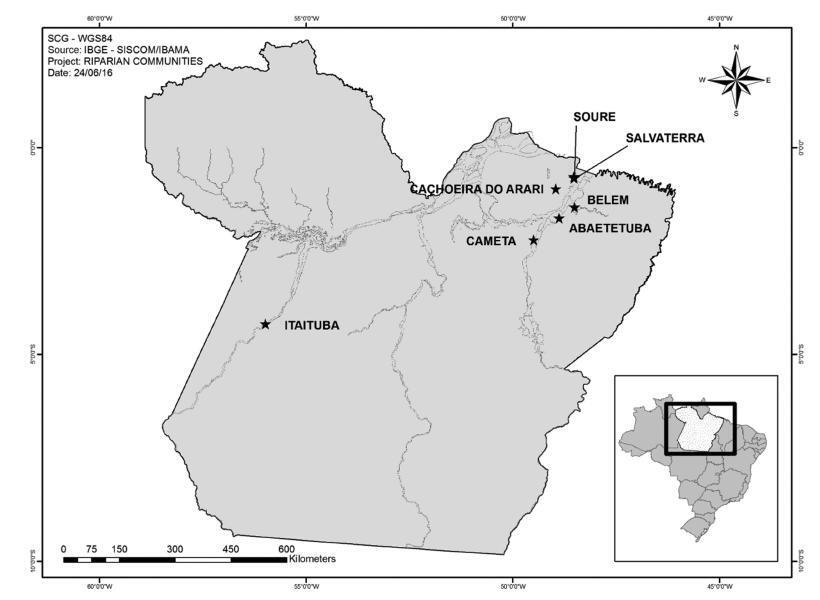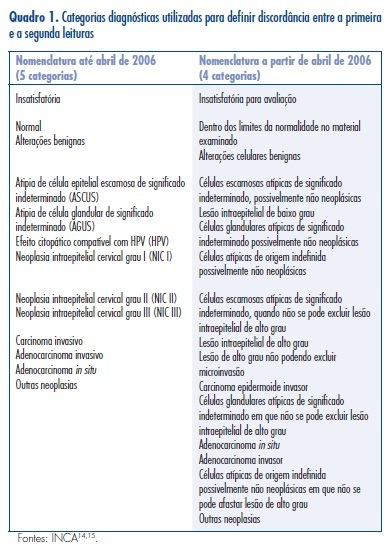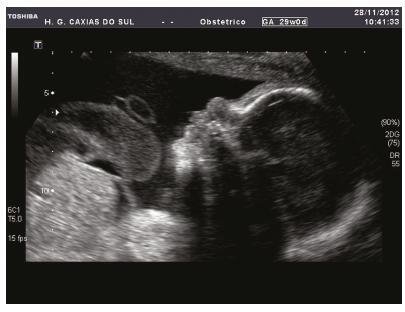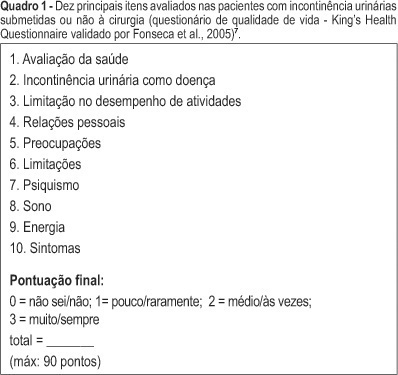Summary
Revista Brasileira de Ginecologia e Obstetrícia. 2002;24(5):350-350
DOI 10.1590/S0100-72032002000500013
Summary
Revista Brasileira de Ginecologia e Obstetrícia. 2017;39(7):350-357
The aim of this study was to evaluate the overall and type-specific prevalence of human papillomavirus (HPV) infection among females living in riverside communities in the state of Pará, in the Eastern Brazilian Amazon. These communities are inhabited by low-income people, and are accessible only by small boats. Cervical cytology and risk factors for HPV infection were also assessed.
Cervical samples from 353 women of selected communities were collected both for Papanicolau (Pap) test and HPV detection. Conventional polymerase chain reaction (PCR) and real-time PCR were used to assess the overall and type-specific prevalence of HPV-16 and HPV-18, the main oncogenic types worldwide. Epidemiological questionnaires were used for the assessment of the risk factors for HPV infection.
The mean age of the participants was 37 years (standard deviation [SD] ± 13.7). Most were married or with a fixed sexual partner (79%), and had a low educational level (80%) and family monthly income (< U$ 250; 53%). Overall, HPV prevalence was 16.4% (n = 58), with 8 cases of HPV-16 (2.3%) and 5 of HPV-18 (1.4%). Almost 70% of the women surveyed had never undergone the Pap test. Abnormal cytology results were found in 27.5% (n = 97) of the samples, with higher rates of HPV infection according to the severity of the lesions (p = 0.026).
The infections by HPV-16 and HPV-18 were not predominant in our study, despite the high prevalence of overall HPV infection. Nevertheless, the oncogenic potential of these types and the low coverage of the Pap test among women from riverside communities demonstrate a potential risk for the development of cervical lesions and their progression to cervical cancer, since the access to these communities is difficult and, in most cases, these women do not have access to primary care and public health services.

Summary
Revista Brasileira de Ginecologia e Obstetrícia. 2021;43(5):351-356
Most prenatal screening programs for toxoplasmosis use immunoassays in serum samples of pregnant women. Few studies assess the accuracy of screening tests in dried blood spots, which are of easy collection, storage, and transportation. The goals of the present study are to determine the performance and evaluate the agreement between an immunoassay of dried blood spots and a reference test in the serum of pregnant women from a population-based prenatal screening program for toxoplasmosis in Brazil.
A cross-sectional study was performed to compare the immunoassays Imunoscreen Toxoplasmose IgM and Imunoscreen Toxoplasmose IgG (Mbiolog Diagnósticos, Ltda., Contagem, Minas Gerais, Brazil)in dried blood spots with the enzymelinked fluorescent assay (ELFA, BioMérieux S.A., Lyon, France) reference standard in the serum of pregnant women from Minas Gerais Congenital Toxoplasmosis Control Program.
The dried blood spot test was able to discriminate positive and negative results of pregnant women when comparedwith the reference test, with an accuracy of 98.2% for immunoglobulin G (IgG), and of 95.8% for immunoglobulin M (IgM).
Dried blood samples are easy to collect, store, and transport, and they have a good performance,making this a promisingmethod for prenatal toxoplasmosis screening programs in countries with continental dimensions, limited resources, and a high prevalence of toxoplasmosis, as is the case of Brazil.
Summary
Revista Brasileira de Ginecologia e Obstetrícia. 2002;24(5):351-351
DOI 10.1590/S0100-72032002000500014
Summary
Revista Brasileira de Ginecologia e Obstetrícia. 2012;34(8):351-356
DOI 10.1590/S0100-72032012000800002
PURPOSE: To evaluate the diagnostic agreement between the cytopathology reports issued by accredited laboratories and those obtained by quality control. METHODS: We calculated the overall agreement and Cohen's kappa coefficients of a convenience sample of smears selected monthly by the Information System of Cervical Cancer (SISCOLO) for External Quality Control of the 15 laboratories that performed cytopathological PAP tests for the Brazilian Public Health System (SUS) between 2002 and 2011 in Mato Grosso do Sul, a State of the Midwest Region of the country. A comparison of the reliability values (coefficient of concordance and Kappa coefficient) between the initial and final years was computed by the absolute change (delta) and relative percent difference (RPD). RESULTS: There were 15.989 smears sent for rereading, 48.1% of which had a report of normal/benign changes, followed by atypical/low-grade squamous intraepithelial lesions (36.3%), high grade squamous intraepithelial lesion/carcinoma/adenocarcinoma (4.2%), and unsatisfactory (11.4%). The overall correlation coefficient ranged between 0.2 and 1.0, and the median value increased from 0.7 in 2002 to 1 in 2011 (RPD=+36.6%). During the same period, the median values of the Kappa coefficient increased from 0.5 to 0.9 (RPD=+80.8%). CONCLUSIONS: These results emphasize the feasibility of the External Quality Control of cytopathology at the state level and its implementation results in improvement in the diagnoses performed in the SUS network.

Summary
Revista Brasileira de Ginecologia e Obstetrícia. 2019;41(5):352-356
Pentalogy of Cantrell (PC) is a rare congenital anomaly characterized by changes in the mesodermal median structures and congenital heart disease, often with a poor prognosis. In 1958, Cantrell et al2 defined the full spectrum of the syndrome with the following anomalies: defects of the anterior diaphragm, of the lower part of the sternum, of the supraumbilical region and the abdominal wall, of the diaphragmatic pericardium, and various intracardiac congenital abnormalities. The present report describes a case of ectopia cordis associated with PC and the importance of the participation of a multidisciplinary team in the treatment of this condition.

Summary
Revista Brasileira de Ginecologia e Obstetrícia. 2006;28(6):352-357
DOI 10.1590/S0100-72032006000600006
PURPOSE: to analyze the impact of urinary incontinence on women's quality of life, submitted or not to surgical treatment. METHODS: sixty women with urinary incontinence during stress were interviewed and divided into two groups classified as: S-CIR group, including 30 women not yet submitted to specific surgical treatment for urinary incontinence, and C-CIR group, including 30 women who had already undergone surgery. The scores obtained after the addition of values attributed to each question of the questionnaires were compared between the two groups. The number of patients who showed any impairment on quality of life due to specific symptoms of incontinence was also compared between groups. Data were analyzed by the variance test and the chi-square test, when applicable. RESULTS: symptoms, limitations and concerns related to urinary incontinence exhibited a strong negative impact on quality of life in patients from the S-CIR group. Impairment during physical exercises, domestic activities and daily working activities was the most important affected aspect in patients of the S-CIR group. Furtherimore, patients of the S-CIR group reported more fatigue, embarrassment, and excessive nervousness. Urine loss during stress followed by urgency were also significantly relevant aspects when groups were compared. CONCLUSIONS: the study allowed the identification and quantification of the derangements of quality of life due to urinary incontinence and demonstrated that these derangements either become less important or even disappear in women submitted to surgery.

Summary
Revista Brasileira de Ginecologia e Obstetrícia. 2010;32(7):352-358
DOI 10.1590/S0100-72032010000700008
PURPOSE: to evaluate the antenatal and postnatal risk factors of neonatal death in pregnancies with absent (DZ) or reverse (DR) end-diastolic flow in the umbilical artery. METHODS: a cross-sectional retrospective study based on data from 48 medical records of singleton pregnancies with DZ or DR, and gestational age of 24 to 34 weeks, at a maternity in the Brazilian Northeast. Mean age was 27.3 (SD: 7.9) years. Twenty (41.7%) patients were primiparas. Hypertensive disorders were found in 44 (91.7%) cases. Thirty-five women (72.9%) had DZ and 13 (27.1%) had DR. Univariate analysis was firstly done (Student's t-test and Fisher's exact test) correlating the parameters with the assessed outcome (neonatal death). Variables that showed significant association were included in the logistic regression model (Wald statistics). The level of significance was set at 5%. RESULTS: The perinatal mortality rate was 64.6% (31/48). There were five stillbirths and 26 neonatal deaths. The mean gestational age at diagnosis was 27.9 (SD: 2.8) weeks. Deliveries before 24 hours after diagnosis occurred in 52.1% of the cases. Cesarean section was performed in 85.4% of the sample. The newborns weighed 975.9 g on average (SD: 457.5). Twenty-four (57.1%) presented Apgar scores below 7 in the first minute and 21.4% in the fifth minute. Gestational age at diagnosis, birth weight and Apgar of the first minute proved to be variables significantly related to neonatal death (p values were: 0.008, 0.004, and 0.020, respectively). The Odds Ratio was 6.6, 25.3 and 13.8 for neonatal death, when the diagnosis was established at the 28th week, weight was <1000 g and first minute Apgar score was <7, respectively. CONCLUSIONS: gestational age at diagnosis, birth weight and Apgar score at the first minute were factors that could predict neonatal death in pregnancies with DV or DR determined by umbilical artery Doppler velocimetry.